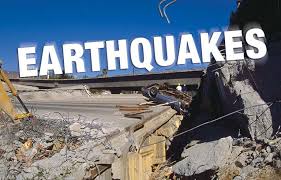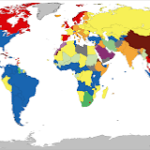Understanding Earthquakes: Causes, Effects, and Preparedness

Earthquakes are natural phenomena characterized by the sudden shaking of the Earth’s surface, resulting from the release of energy stored in the Earth’s crust. This energy release occurs due to the movement of tectonic plates, which are massive slabs of the Earth’s lithosphere that float on the semi-fluid asthenosphere beneath them.
Causes of Earthquakes:
The primary cause of earthquakes is tectonic activity. The Earth’s crust is divided into several plates that constantly move, albeit very slowly. When these plates interact, they can converge, diverge, or slide past each other along fault lines. The stress accumulated from these movements eventually overcomes the friction holding the rocks together, causing a sudden slip. This slip generates seismic waves that propagate through the Earth, resulting in ground shaking. Earthquakes can also be induced by volcanic activity, human activities such as mining or reservoir-induced seismicity, and other geological processes.
“Beat the Pressure: A Comprehensive Guide to Lowering Blood Pressure Naturally.”
Buy book from Gumroad or Paystack
Effects of Earthquakes:
The impact of an earthquake can be devastating, depending on its magnitude, depth, and proximity to populated areas. Ground shaking can cause buildings, bridges, and roads to collapse, leading to significant loss of life and property. Secondary effects include landslides, tsunamis (if the earthquake occurs under the ocean), fires from ruptured gas lines, and soil liquefaction, where saturated soils lose strength and behave like a liquid. The economic and social consequences can be long-lasting, disrupting communities and requiring extensive recovery efforts.
Measuring Earthquakes:
Seismologists use instruments called seismographs to detect and record seismic waves. The magnitude of an earthquake, which quantifies the energy released, is commonly measured using the Richter scale or the more modern Moment Magnitude Scale (Mw). The intensity, which describes the effects on people and structures, is measured by the Modified Mercalli Intensity scale.
Preparedness and Safety:
While earthquakes cannot be predicted with exact timing, regions prone to seismic activity adopt various measures to mitigate risks. These include enforcing strict building codes that ensure structures can withstand shaking, public education on earthquake safety, and developing early warning systems that provide seconds to minutes of advance notice. During an earthquake, safety protocols advise people to drop, cover, and hold on, seeking shelter under sturdy furniture and away from windows or heavy objects.
In conclusion, understanding earthquakes is crucial for minimizing their destructive impact. Through scientific research, engineering advancements, and community preparedness, societies can better cope with these powerful natural events and reduce the risks they pose to human life and infrastructure.
💔 “She said she loved me. And for fifty-two years, I believed her.” 💔
Buy The Book "The Longest Lie: A Husband’s Journey Through Love, Betrayal, and Redemption" From Gumroad






